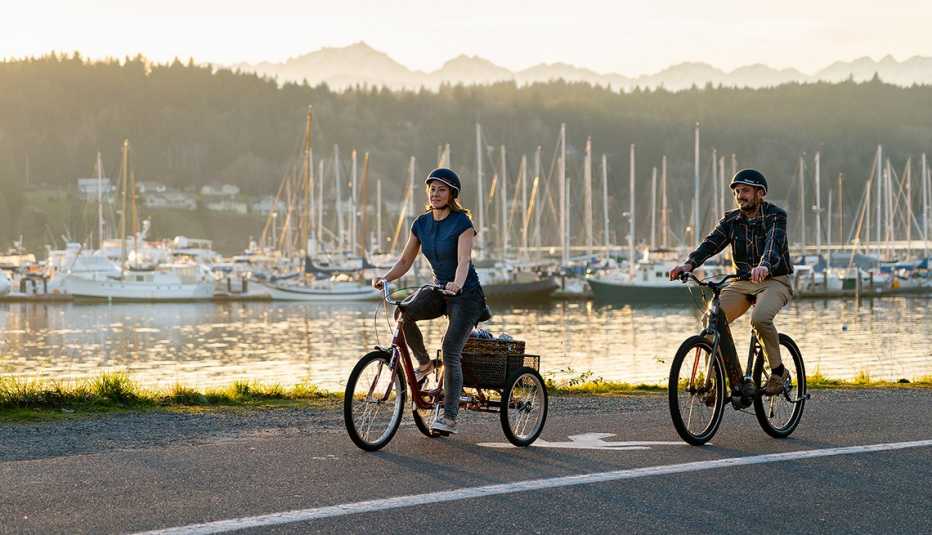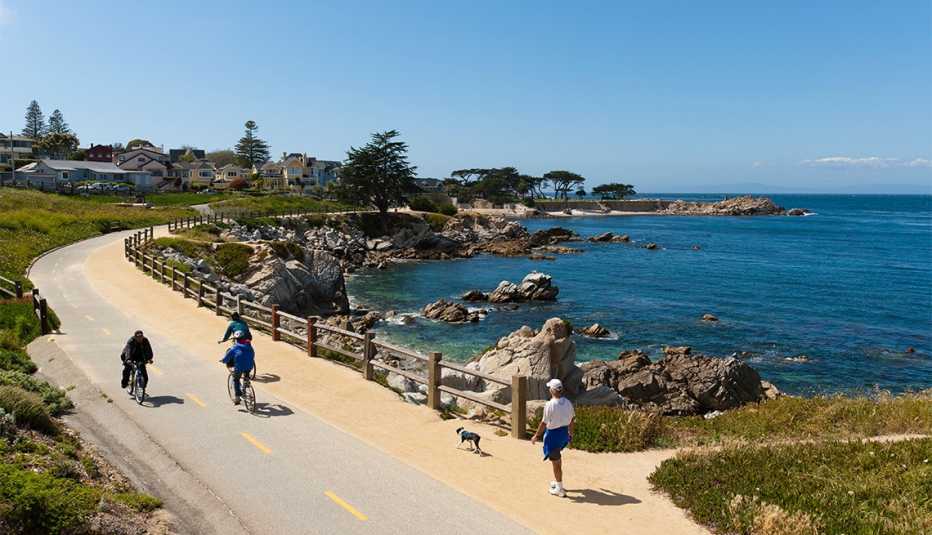Staying Fit
As a great way to exercise, get some fresh air and, lately, stay socially distant, biking is more popular than ever. But it also carries some risk. For older cyclists in particular, fatalities have nearly tripled over the past four decades, according to U.S. Department of Transportation numbers. In fact, the largest proportion of fatal crashes now occurs in people ages 35 to 54.
That may be because more older adults are riding bikes — and some for the first time in a while. Since the onset of COVID-19, 10 percent of U.S. adults reported having ridden a bike for the first time in a year or more, according to a survey by a national biking advocacy group.


AARP Membership— $12 for your first year when you sign up for Automatic Renewal
Get instant access to members-only products and hundreds of discounts, a free second membership, and a subscription to AARP the Magazine.
The surging popularity of electronic bikes, or e-bikes, has been its own risk factor in this age group. Data shows that e-bike owners tend to be in their 40s and up, and a 2019 study published in the journal Injury Prevention found that crashes involving the power-assisted, potentially higher-speed cycles were more likely to result in hospitalization and internal injuries for riders compared to traditional bikes. There may also be a false sense of security around these newer makes: One of the first surveys of North American e-bike owners found that the majority reported feeling safer riding an e-bike than they do with a standard one.
Given that the biking boom inspired by the pandemic shows no signs of slowing, and all the benefits of cycling — it's a carbon-free form of transportation, a family-friendly recreational activity, a great way to get in your daily recommended amount of moderate physical activity — it's a good idea for all riders to learn how to avoid becoming one of those statistics.
1. Know the Road
Plenty of advocacy groups agree that the first line of defense for reducing motor vehicle crashes involving “vulnerable road users,” a category that includes pedestrians and cyclists, is better infrastructure. That means roadways designed to accommodate bikes, which “don't have two tons of steel surrounding them, or airbags that inflate during a crash,” says Allison Dewey, education director for the League of American Bicyclists. During the pandemic, approximately 200 U.S. cities implemented changes to enhance the functionality of their streets and better accommodate increased outdoor activity, including bike lanes.



































































